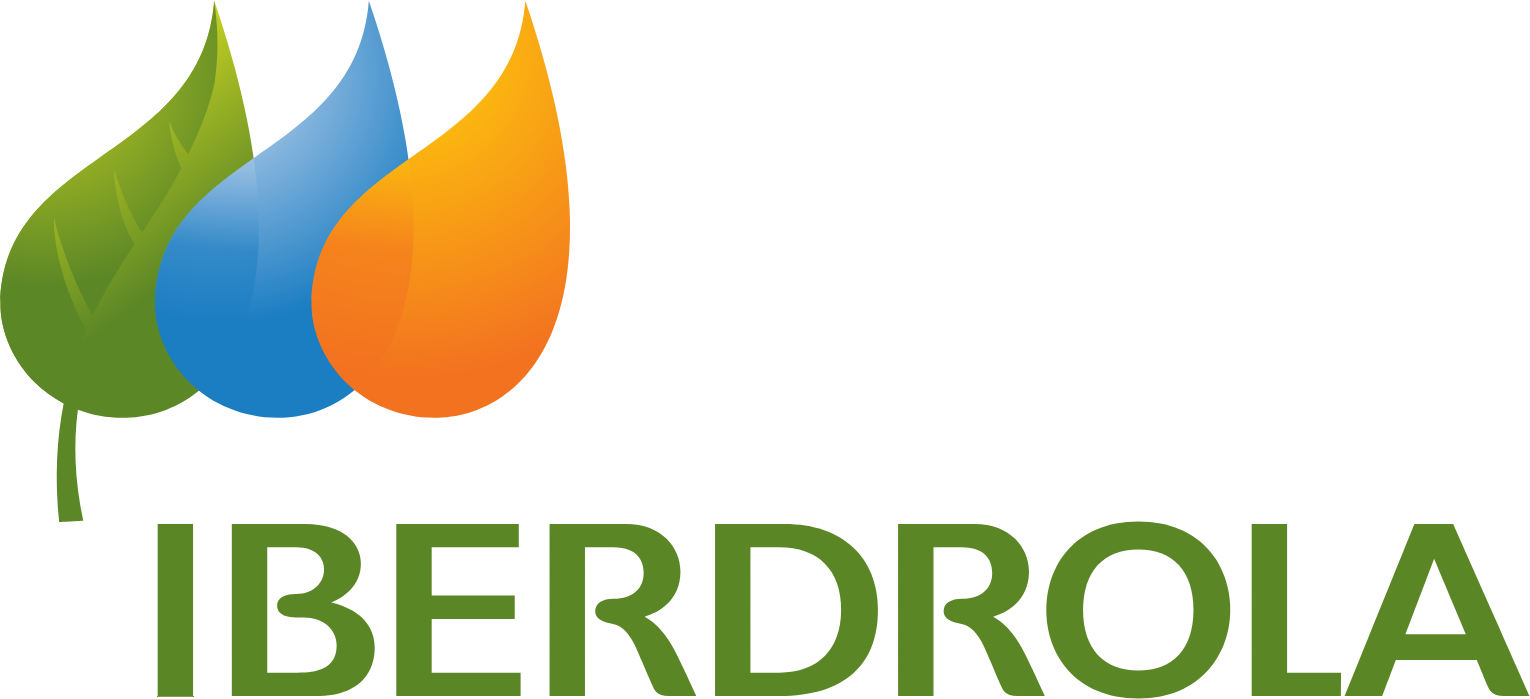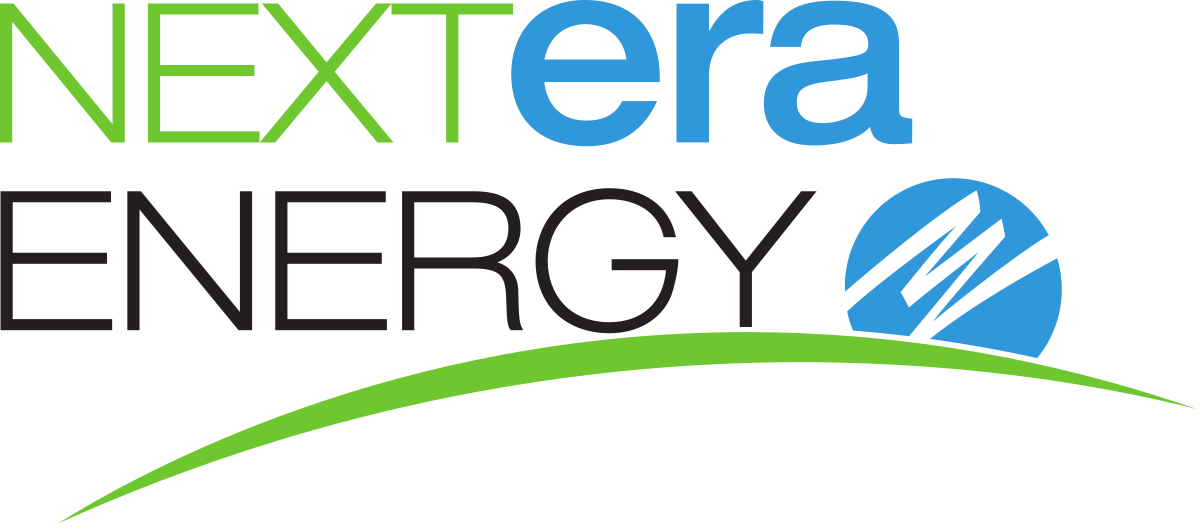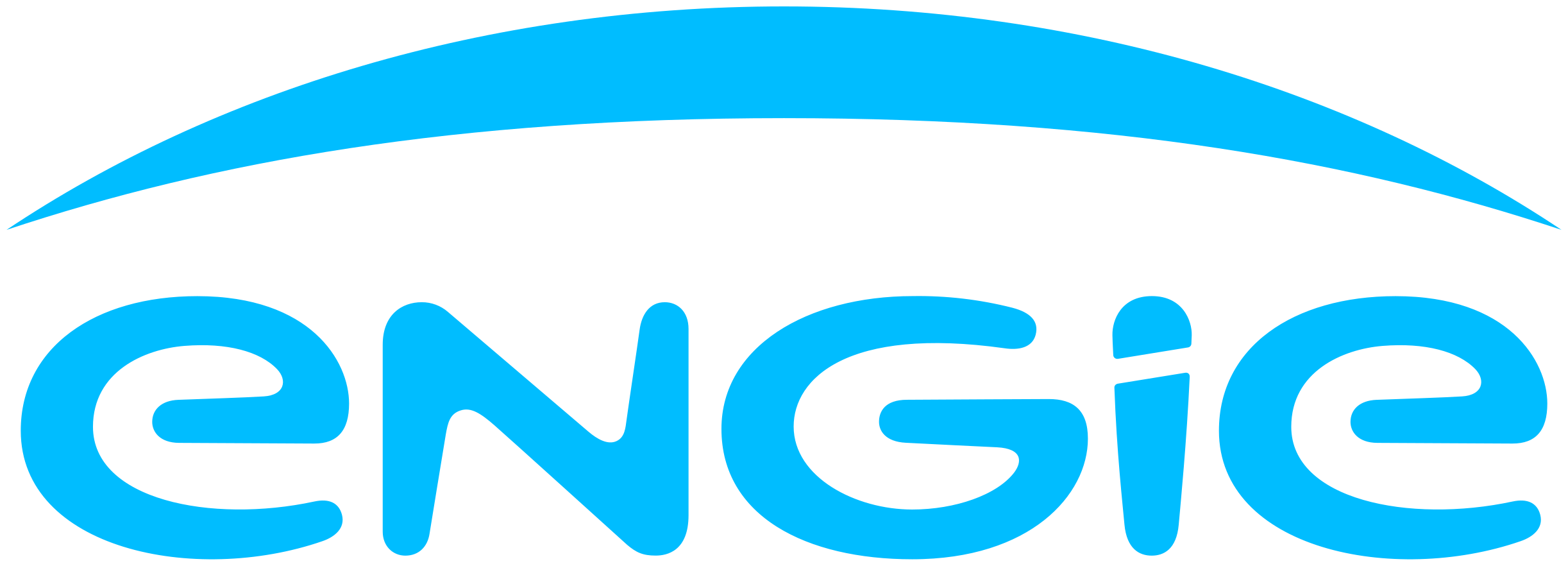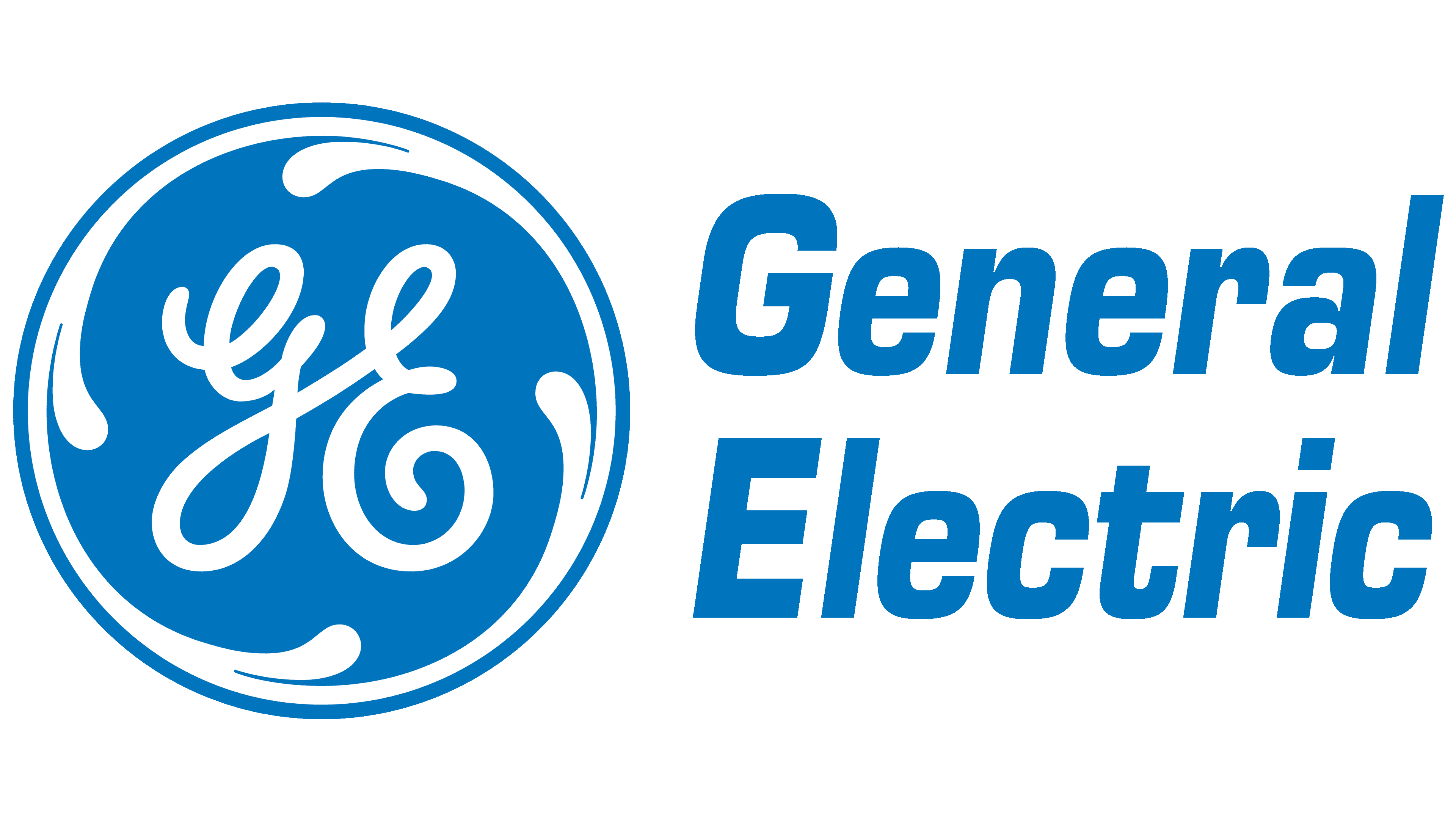Global Synthetic Natural Gas Market: By Source, By Technology, By Application, By Region & Segmental Insights Trends and Forecast, 2024 – 2034
- Industry: Energy & Power
- Report ID: TNR-110-1092
- Number of Pages: 420
- Table/Charts : Yes
- May, 2024
- Base Year : 2024
- No. of Companies : 10+
- No. of Countries : 29
- Views : 10162
- Covid Impact Covered: Yes
- War Impact Covered: Yes
- Formats : PDF, Excel, PPT
Synthetic natural gas (SNG), also known as substitute natural gas or renewable natural gas, is a type of fuel produced through the conversion of various feedstocks, such as biomass, municipal solid waste, or coal, into a gas that closely resembles natural gas in terms of composition and properties. The production process typically involves gasification or anaerobic digestion followed by purification steps to remove impurities and contaminants.
SNG offers environmental benefits over traditional fossil fuels, including reduced greenhouse gas emissions and lower air pollution. As governments worldwide implement stricter environmental regulations to combat climate change and improve air quality, the demand for cleaner energy sources such as SNG is expected to increase. Many countries have established renewable energy targets and incentives to promote the use of low-carbon and renewable fuels.
SNG, when produced from biomass or other renewable feedstocks, can contribute to meeting these targets and diversifying the energy mix. SNG can serve as a flexible energy resource for grid balancing and energy storage applications, helping to stabilize the grid and manage fluctuations in renewable energy generation, such as wind and solar. Its ability to be stored and transported through existing natural gas infrastructure makes it an attractive option for energy storage.
In terms of revenue, the global synthetic natural gas market was worth US$ 22.9 Bn in 2023, anticipated to witness CAGR of 24.2% During 2024 – 2034.
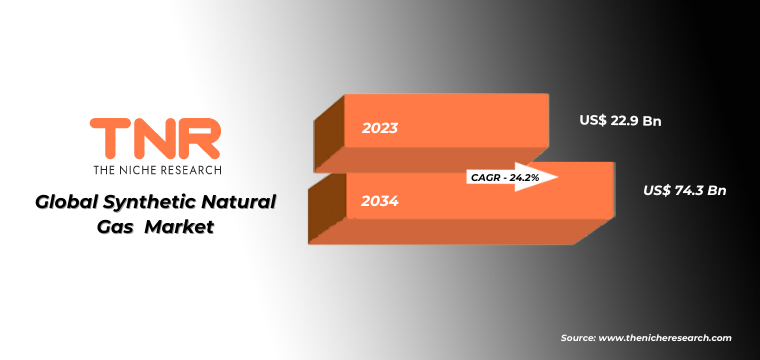
Global Synthetic Natural Gas Market Key Dynamics
Energy Demand and Security: The growing global demand for energy, coupled with concerns about energy security and dependence on fossil fuels, drives the need for alternative sources of natural gas. SNG offers a potential solution by providing a renewable or low-carbon substitute for traditional natural gas, reducing reliance on imports and enhancing energy security.
Renewable Energy Policies: Government initiatives and policies aimed at reducing greenhouse gas emissions and promoting renewable energy sources play a significant role in driving the adoption of SNG. Renewable energy targets, carbon pricing mechanisms, and financial incentives for renewable energy projects encourage investment in SNG production technologies, such as biomass gasification and biogas upgrading.
Environmental Regulations: Stringent environmental regulations aimed at reducing air pollution and carbon emissions incentivize the use of cleaner fuels like SNG. Policies such as carbon taxes, emissions trading schemes, and renewable energy mandates create market opportunities for SNG producers and encourage the development of technologies for carbon capture and utilization (CCU) or carbon capture and storage (CCS).
Thermal Gasification segment dominated the Global Synthetic natural gas Market During the Forecast Period (2024 – 2034).
Thermal gasification provides an opportunity to utilize a diverse range of feedstocks, including biomass, municipal solid waste, and coal, to produce SNG domestically. This reduces dependence on imported natural gas and enhances energy security by diversifying the energy mix. Government policies and incentives aimed at promoting renewable energy sources and reducing greenhouse gas emissions drive demand for SNG produced through thermal gasification.
Renewable energy targets, carbon pricing mechanisms, and feed-in tariffs encourage investment in thermal gasification projects and SNG production facilities. Stringent environmental regulations, such as emissions standards and carbon pricing, incentivize the use of cleaner fuels like SNG produced from renewable or low-carbon feedstocks. Thermal gasification technologies offer the potential for carbon capture and utilization (CCU) or carbon capture and storage (CCS), further enhancing their attractiveness from an environmental perspective.
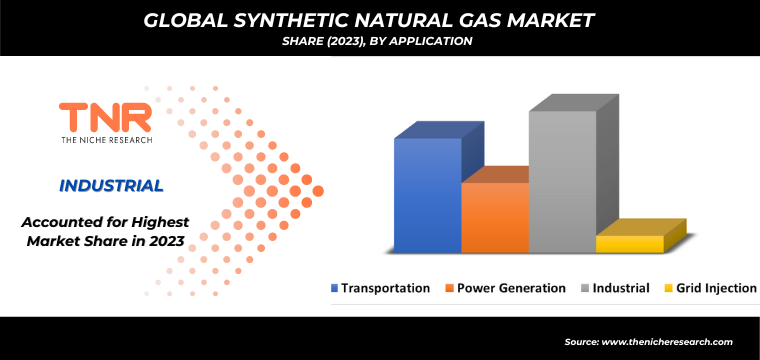
Industrial Segment had the Highest Share in the Global Synthetic natural gas Market in 2023.
Industries such as steel, cement, chemicals, and manufacturing have high energy requirements for heating, drying, and process energy. SNG provides a reliable and flexible energy source that can meet these intensive energy needs while reducing greenhouse gas emissions compared to conventional fossil fuels. Industries require a reliable and uninterrupted energy supply to maintain production processes and operations. SNG offers an alternative to traditional natural gas, reducing dependence on imported fossil fuels and enhancing energy security for industrial facilities. Stringent environmental regulations and emission standards drive industries to seek cleaner energy sources to comply with air quality and greenhouse gas emissions targets. SNG produced from renewable or low-carbon feedstocks offers a sustainable solution for reducing emissions and achieving environmental compliance.

Biomass Accounted for the Second Highest Share in the Global Synthetic Natural Gas Market in 2023.
Governments and energy utilities often set renewable energy targets to reduce reliance on fossil fuels and mitigate climate change. Biomass-derived SNG contributes to these goals by providing a renewable and sustainable alternative to natural gas, thereby diversifying the energy mix and increasing energy security. Many industries and countries have committed to achieving carbon neutrality or net-zero emissions by a certain target year.
Biomass-based SNG offers a carbon-neutral energy source when produced from sustainably managed biomass feedstocks, as the carbon dioxide released during combustion is offset by the carbon dioxide absorbed during biomass growth. Biomass feedstocks for SNG production can include agricultural residues, forestry residues, organic waste materials, and dedicated energy crops. Utilizing these biomass resources for SNG production helps divert organic waste from landfills, mitigates methane emissions from decomposing organic matter, and contributes to more sustainable waste management practices.
Europe had the Highest Market Share in 2023 in the Global Synthetic Natural Gas Market.
The European Union (EU) has set ambitious renewable energy targets to reduce greenhouse gas emissions and increase the share of renewable energy in the overall energy mix. SNG produced from renewable feedstocks, such as biomass and biogas, contributes to these targets by providing a renewable and sustainable alternative to natural gas. European countries are committed to decarbonizing their economies and achieving carbon neutrality by mid-century. SNG produced from renewable feedstocks plays a crucial role in this transition by providing a low-carbon alternative to fossil fuels and helping to reduce greenhouse gas emissions in sectors such as industry, heating, and transportation.

Competitive Landscape: Global Synthetic Natural Gas Market
- Air Liquide
- Basin Electric Power Cooperative
- Chevron Corporation
- E. ON SE
- EnviTec Biogas AG
- Kinder Morgan
- MAN Energy Solutions
- OPAL Fuels
- Total Energies
- Verbio SE
- Waga Energy
- Other Market Participants
Global Synthetic Natural Gas Market Key Details:
| Report Specifications | Details |
| Market Revenue in 2023 | US$ 22.9 Bn |
| Market Size Forecast by 2034 | US$ 74.3 Bn |
| Growth Rate (CAGR) | 24.2% |
| Historic Data | 2016 – 2022 |
| Base Year for Estimation | 2023 |
| Forecast Period | 2024 – 2034 |
| Report Inclusions | Market Size & Estimates, Market Dynamics, Competitive Scenario, Trends, Growth Factors, Market Determinants, Key Investment Segmentation, Product/Service/Solutions Benchmarking |
| Segments Covered | By Source, By Technology, By Application |
| Regions Covered | North America, Europe, Asia Pacific, Middle East & Africa, Latin America |
| Countries Covered | U.S., Canada, Mexico, Rest of North America, France, The UK, Spain, Germany, Italy, Nordic Countries (Denmark, Finland, Iceland, Sweden, Norway), Benelux Union (Belgium, The Netherlands, Luxembourg), Rest of Europe, China, Japan, India, New Zealand, Australia, South Korea, Southeast Asia (Indonesia, Thailand, Malaysia, Singapore, Rest of Southeast Asia), Rest of Asia Pacific, Saudi Arabia, UAE, Egypt, Kuwait, South Africa, Rest of Middle East & Africa, Brazil, Argentina, Rest of Latin America |
| Key Players | Air Liquide, Basin Electric Power Cooperative, Chevron Corporation, E. ON SE, EnviTec Biogas AG, Kinder Morgan, MAN Energy Solutions, OPAL Fuels, Total Energies, Verbio SE, Waga Energy, Other Market Participants |
| Customization Scope | Customization allows for the inclusion/modification of content pertaining to geographical regions, countries, and specific market segments. |
| Pricing & Procurement Options | Explore purchase options tailored to your specific research requirements |
| Contact Details | Consult With Our Expert
Japan (Toll-Free): +81 663-386-8111 South Korea (Toll-Free): +82-808- 703-126 Saudi Arabia (Toll-Free): +966 800-850-1643 United Kingdom: +44 753-710-5080 United States: +1 302-232-5106 E-mail: askanexpert@thenicheresearch.com
|
Global Synthetic Natural Gas Market
By Source
- Coal
- Biomass
- Renewable Energy
- Others
By Technology
- Anaerobic digestion & fermentation
- Thermal gasification
-
- Moving bed gasifier
- Fluidized bed gasifier
- Entrained flow gasifier
- Power-to-gas
- Others
By Application
- Transportation
- Power Generation
- Industrial
- Grid Injection
By Region
- North America (U.S., Canada, Mexico, Rest of North America)
- Europe (France, The UK, Spain, Germany, Italy, Nordic Countries (Denmark, Finland, Iceland, Sweden, Norway), Benelux Union (Belgium, The Netherlands, Luxembourg), Rest of Europe)
- Asia Pacific (China, Japan, India, New Zealand, Australia, South Korea, Southeast Asia (Indonesia, Thailand, Malaysia, Singapore, Rest of Southeast Asia), Rest of Asia Pacific)
- Middle East & Africa (Saudi Arabia, UAE, Egypt, Kuwait, South Africa, Rest of Middle East & Africa)
- Latin America (Brazil, Argentina, Rest of Latin America)
Report Coverage

Table of Contents
**Exclusive for Multi-User and Enterprise User.
Global Synthetic Natural Gas Market
By Source
- Coal
- Biomass
- Renewable Energy
- Others
By Technology
- Anaerobic digestion & fermentation
- Thermal gasification
-
- Moving bed gasifier
- Fluidized bed gasifier
- Entrained flow gasifier
- Power-to-gas
- Others
By Application
- Transportation
- Power Generation
- Industrial
- Grid Injection
By Region
- North America (U.S., Canada, Mexico, Rest of North America)
- Europe (France, The UK, Spain, Germany, Italy, Nordic Countries (Denmark, Finland, Iceland, Sweden, Norway), Benelux Union (Belgium, The Netherlands, Luxembourg), Rest of Europe)
- Asia Pacific (China, Japan, India, New Zealand, Australia, South Korea, Southeast Asia (Indonesia, Thailand, Malaysia, Singapore, Rest of Southeast Asia), Rest of Asia Pacific)
- Middle East & Africa (Saudi Arabia, UAE, Egypt, Kuwait, South Africa, Rest of Middle East & Africa)
- Latin America (Brazil, Argentina, Rest of Latin America)
The Niche Research approach encompasses both primary and secondary research methods to provide comprehensive insights. While primary research is the cornerstone of our studies, we also incorporate secondary research sources such as company annual reports, premium industry databases, press releases, industry journals, and white papers.
Within our primary research, we actively engage with various industry stakeholders, conducting paid interviews and surveys. Our meticulous analysis extends to every market participant in major countries, allowing us to thoroughly examine their portfolios, calculate market shares, and segment revenues.
Our data collection primarily focuses on individual countries within our research scope, enabling us to estimate regional market sizes. Typically, we employ a bottom-up approach, meticulously tracking trends in different countries. We analyze growth drivers, constraints, technological innovations, and opportunities for each country, ultimately arriving at regional figures.Our process begins by examining the growth prospects of each country. Building upon these insights, we project growth and trends for the entire region. Finally, we utilize our proprietary model to refine estimations and forecasts.
Our data validation standards are integral to ensuring the reliability and accuracy of our research findings. Here’s a breakdown of our data validation processes and the stakeholders we engage with during our primary research:
- Supply Side Analysis: We initiate a supply side analysis by directly contacting market participants, through telephonic interviews and questionnaires containing both open-ended and close-ended questions. We gather information on their portfolios, segment revenues, developments, and growth strategies.
- Demand Side Analysis: To gain insights into adoption trends and consumer preferences, we reach out to target customers and users (non-vendors). This information forms a vital part of the qualitative analysis section of our reports, covering market dynamics, adoption trends, consumer behavior, spending patterns, and other related aspects.
- Consultant Insights: We tap into the expertise of our partner consultants from around the world to obtain their unique viewpoints and perspectives. Their insights contribute to a well-rounded understanding of the markets under investigation.
- In-House Validation: To ensure data accuracy and reliability, we conduct cross-validation of data points and information through our in-house team of consultants and utilize advanced data modeling tools for thorough verification.
The forecasts we provide are based on a comprehensive assessment of various factors, including:
- Market Trends and Past Performance (Last Five Years): We accurately analyze market trends and performance data from preceding five years to identify historical patterns and understand the market’s evolution.
- Historical Performance and Growth of Market Participants: We assess the historical performance and growth trajectories of key market participants. This analysis provides insights into the competitive landscape and individual company strategies.
- Market Determinants Impact Analysis (Next Eight Years): We conduct a rigorous analysis of the factors that are projected to influence the market over the next eight years. This includes assessing both internal and external determinants that can shape market dynamics.
- Drivers and Challenges for the Forecast Period:Identify the factors expected to drive market growth during the forecast period, as well as the challenges that the industry may face. This analysis aids in deriving an accurate growth rate projection.
- New Acquisitions, Collaborations, or Partnerships: We keep a close watch on any new acquisitions, collaborations, or partnerships within the industry. These developments can have a significant impact on market dynamics and competitiveness.
- Macro and Micro Factors Analysis:A thorough examination of both macro-level factors (e.g., economic trends, regulatory changes) and micro-level factors (e.g., technological advancements, consumer preferences) that may influence the market during the forecast period.
- End-User Sentiment Analysis: To understand the market from the end-user perspective, we conduct sentiment analysis. This involves assessing the sentiment, preferences, and feedback of the end-users, which can provide valuable insights into market trends.
- Perspective of Primary Participants: Insights gathered directly from primary research participants play a crucial role in shaping our forecasts. Their perspectives and experiences provide valuable qualitative data.
- Year-on-Year Growth Trend: We utilize a year-on-year growth trend based on historical market growth and expected future trends. This helps in formulating our growth projections, aligning them with the market’s historical performance.
Research process adopted by TNR involves multiple stages, including data collection, validation, quality checks, and presentation. It’s crucial that the data and information we provide add value to your existing market understanding and expertise. We have also established partnerships with business consulting, research, and survey organizations across regions and globally to collaborate on regional analysis and data validation, ensuring the highest level of accuracy and reliability in our reports.
